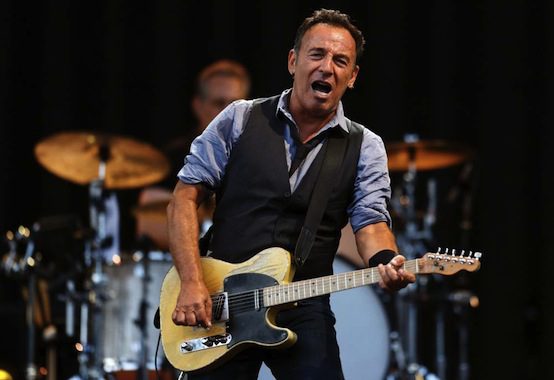How to Rebuild, Without Transforming, the Jersey Shore

At last night’s “12-12-12” benefit concert for victims of Hurricane Sandy, Bruce Springsteen, without quite saying so, raised the specter of gentrification. He nostalgically recalled how the New Jersey Shore was an “inclusive” destination, populated and visited by people of every socioeconomic background (unlike, say, Hilton Head or Malibu). How to retain that character, he said, will be the subject of some “interesting conversations.” Later, actor James Gandolfini glumly predicted that the boardwalk’s mom-and-pop shops would be replaced (presumably by chain stores or larger, nonlocal businesses).
These famous New Jerseyans are hardly the first to experience this Jane Jacobsian dread.
With Hurricane Isaac threatening the Gulf Coast this past summer, the Associated Press reported on still-raw feelings about the rebuilding of post-Katrina New Orleans:
Private and government investment is fueling the push to overhaul some of the city’s troubled but culturally rich neighborhoods near the French Quarter, where poor families are being replaced as wealthier ones move in. While the city’s in a boom and even gentrifying, some question whether it will wither the roots that grew the city’s distinctive identity. “New Orleans is becoming a boutique city like San Francisco,” said Gary Clark, a politics professor at Dillard University. “You may see black middle class moving in, but with gentrification there’s overwhelmingly white individuals of means who become the new urban pioneers.”
The number of whites, although smaller than before Katrina, has grown as an overall percentage from 28 percent to 33 percent of the city’s population. The city has its first white mayor since the 1970s, while the City Council now has a majority of white members. On the flip side, blacks say there’s danger that their community will be diminished in a city that owes deep cultural and economic debts to its Afro-Caribbean roots. Since the storm the African-American community has shrunk by about 118,500 people, dropping from about 68 percent of the population to about 60 percent.
This is not a trivial thing to worry about — even as affected communities are still physically cleaning up wreckage and repairing damage. Identity is embedded in place, which is in turn embedded in continuous traditions, customs, and folkways. What is the appropriate conservative disposition when disaster forces you to suddenly build from scratch? Instead of conserving a physical space, or incrementally redeveloping it, we’re inevitably tossed into the hands of planners, advisory committees, humanitarian architects, and real estate magnates with their eyes on prime oceanfront property.
Does the title of this post — rebuild, don’t transform — even express a realistic possibility? Have the communities in Sandy’s wake already been irrevocably transformed?
I don’t have a readymade answer to any of these questions. Just thought I’d open it up for discussion.
Anyone? Dreher?
Comments